Project Leaders
Efforts to determine a way to protect the Fargo-Moorhead area from ongoing flooding began in the aftermath of the 1997 flood, which was a record at the time. Since then, there have been thousands of hours of discussions held, many engineered designs reviewed, 16 acts of Congress passed, and more than 200 permits issued. The collaboration hasn’t just been across city, county and state lines but among more than 50 organizations, from utility companies to environmental agencies to area townships.
There have been many hundreds of people involved in the process, and more will join the effort in coming years. Here’s an introduction to just some of those people and the roles they have played in making permanent, reliable flood control a reality.
We know this won’t be an all-encompassing list, but we want to recognize as many as we can. If you or someone you know should be included, please email info@FMDiversion.gov.
Jump to:
a b c d e f g h i j k l m n o p q r s t u v w x y z

Kris Bakkegard, Director of Engineering
Organization: Metro Flood Diversion Authority
On Project Since: 2012
Before coming on board as the MFDA’s first director of engineering in 2020, Bakkegard was part of the Houston-Moore Group technical team that worked on transportation planning and design services. Now in his MFDA role, he’s coordinating the technical delivery of the project with its many partners.
“This project has had many large accomplishments to date,” he said. “The one that sticks out to me is the successful procurement and contracting for the first flood project using a public-private partnership. Being able to be a part of the selection team for this historic event will always be a fond memory for me.”
Using a P3 for a project like this has never before happened in North America, but it has numerous benefits.
“The accelerated pace of achieving an operational project by utilizing the split-delivery model will allow us to provide protection to the metro many years ahead of a traditionally delivered project,” Bakkegard said.

Paul Barthel, Program Manager
Organization: Jacobs (Program Management Consultant)
On Project Since: 2017
Barthel’s initial work on the project began with developing and writing the various technical requirements for the public-private partnership regarding the transportation and traffic aspects of the P3. After that, he became involved in the funding and financing, communications, contracting and schedule. Now, as program manager, he is involved in nearly every project area, supporting the MFDA in a variety of ways.
“Since the P3 is a totally different contracting method than what is usually used in the Fargo area, there was very little understanding of P3 contracts and the contracting methodology, especially by the Board members,” Barthel said. “This led to unnecessary concerns and misunderstandings of what was going on within the P3 process. Through Lunch-N-Learn meetings, one-on-one meetings and Board and Finance Committee presentations, I was able to help communicate this process and some of the complexities of the design, build, operate, maintain and finance portions of the P3 process.”
Besides those meetings, there were numerous hours spent planning, discussing and reviewing the plan as well as coordination across the U.S. Army Corps of Engineers and state and local governments. When it all came together, the Red River Valley Alliance was selected as the P3 developer.
“Although a number of different entities and people will take credit for the project, this project is only possible due to the people of the Fargo-Moorhead metro area,” Barthel said. “Through their approval of the sales tax for this project, the people of the area really got this project going and provided the financial backing that was needed for this project to move forward. This is their project.”
 Jason Benson, County Engineer
Jason Benson, County Engineer
Organization: Cass County, North Dakota
On Project Since: 2010
“Over the last 13 years, I’ve been able to be involved in the project from nearly every aspect of technical, engineering and design,” Benson said. “My involvement from testifying in Bismarck at the Legislature and assisting in the development of the public-private partnership have provided me a great opportunity to influence this project for the benefit of Cass County residents.”
With more than a decade of working on the project, there were challenges to overcome, but also some big accomplishments.
“Serving on the Governor’s Task Force in 2017 at the request of Governor Burgum was a significant challenge as I was the only representative on the Task Force with technical experience on the project,” Jason said.
He spent significant time reviewing the past concepts that would be brought up again as potential options so he could speak to the technical side of things and why those options were not feasible. Doing so helped bring the project to a suitable, practical design.
Benson also helped with the final selection of and contract agreement with the public-private partner. He again served on a Technical Review Committee to assist in writing and reviewing the RFP, reviewing the technical submittals, and conducting interviews with the P3 teams. This resulted in the selection of the Red River Valley Alliance as the awarded team and the U.S. Army Corps of Engineer’s first P3 project.
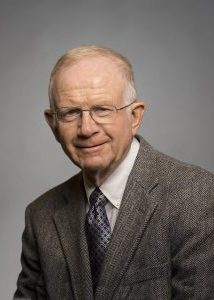
In Memory of Mark Bittner
Bittner served as a city engineer with the Fargo Engineering Office for almost 43 years. He helped the community weather the record-breaking floods in 1997 and 2009 and helped lead planning efforts for the FM Area Diversion. He was a key reason why Fargo did not lose those fights. Prior to the 1997 flood, he incorporated GIS (geographical information system) mapping into the planning, a technology that was yet to be widely embraced by city engineers. By mapping the area, he ensured that the community was ready to fight the rising floodwaters. Bittner died in May 2023.
Nathan Boerboom, Division Engineer
Organization: City of Fargo
On Project Since: 2009 (full time since 2015)
Boerboom has provided a slew of technical support across different project areas, and he helped develop the RFP for the historic public-private partnership that’s being used.
“Some of these roles include implementing the in-town levee features within Fargo, being a member of the Technical Advisory Group, which includes being on TAG during the Governors’ Task Force during the development of Plan B,” he said.
That plan, which became the final design that’s being implemented, also required working to secure a permit from the Minnesota Department of Natural Resources. Boerboom feels navigating that challenge ended in one of the project’s biggest accomplishments.
Gwen Buchholz, Environmental Consultant
Organization: Permit Engineer Inc.
On Project Since: 2017
Bucholz built working relationships with regulatory agencies and stakeholders while coordinating what’s needed to obtain environmental permits and meet the respective conditions. Her efforts have assisted with design and construction needs, helping to ensure the project meets or exceeds applicable regulations.
It’s a role outside of the public eye, but Bucholz hopes what does resonate with the public is the “overall benefit of the program to reduce flood risks and to protect biological resources and recreational opportunities.”
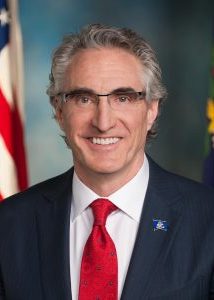 Doug Burgum, Governor 2016-2024, U.S. Secretary of the Interior 2025
Doug Burgum, Governor 2016-2024, U.S. Secretary of the Interior 2025
Organization: State of North Dakota and the Department of the Interior
On Project Since: 2018
As a longtime Fargo resident and business leader who repeatedly fought floods before being elected governor in 2016, Gov. Burgum has been a strong supporter of the F-M Area Diversion project since its inception and was instrumental in overcoming one of its biggest challenges. One month after a federal judge temporarily halted construction on the project, Burgum convened a meeting with then-Minnesota Gov. Mark Dayton in October 2018, and they jointly decided to create the 16-member F-M Area Flood Diversion Task Force to address the Minnesota Department of Natural Resources’ concerns about the project.
Burgum and Dayton co-chaired the Task Force, which convened for five full days in three months – aided by technical subcommittees that spent hundreds of hours analyzing alternatives – to try to reach consensus on project components. That work led to the diversion authority submitting a new “Plan B” permit application to the DNR in March 2018, which was ultimately granted and got the project moving again.
As governor and chairman of the State Water Commission, Burgum also has played a key role in securing $850 million in state funding for the project, which will protect more than 235,000 people, over $25 billion in property value and roughly 20% of North Dakota’s sales tax collections.
“The F-M Area Diversion stands tall as a national model for how to accomplish a major flood protection project with local, state, federal and private sector collaboration,” Burgum said. “The enormous benefits of this historic project will be felt for generations, and we’re deeply grateful to everyone whose tireless work and dedication has helped bring the project to fruition.”
 Kevin L. Campbell, MFDA Board Member
Kevin L. Campbell, MFDA Board Member
Organization: Clay County, Minnesota, Commissioner
On Project Since: 2009
Commissioner Campbell’s work on the project dates to its beginnings, when he co-chaired the Metro Flood Study Work Group, which was established after the record-breaking 2009 flood to develop a permanent flood protection solution. The group later expanded and evolved to become the Metro Flood Diversion Authority, and Campbell is a Board member.
As the project came together, he witnessed “the different government entities, including the states of Minnesota and North Dakota, go through the painful and lengthy deliberations to resolve the legal differences that finally made this project permittable in both states.”
Part of that process involved working with the U.S. Army Corps of Engineers and federal government to secure the best location for the diversion to ensure it protected as many as possible.
“This project will be a contributing factor to assure the future economic growth and development of our region,” Campbell said. “Reducing or eliminating the threat of a catastrophic event will help secure the health and safety of our communities that were previously threatened by near-catastrophic flooding events.”
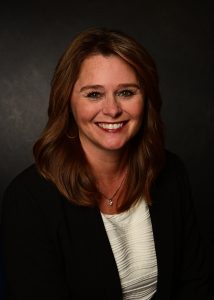
Shelly Carlson, Moorhead Mayor
Organization: City of Moorhead
On Project Since: 2020
Mayor Carlson was appointed to the MFDA Board in 2020 and became the chairwoman in 2021, which was a monumental year for the project.
“In 2021, the WIFIA loan was signed (saving taxpayers millions!), all local, state and federal funding was secured, and our P3 partner was identified,” she said. “These pivotal milestones provided the financial assurance that enabled the project to continue forward movement and kept it on track to deliver permanent, reliable flood protection by 2027.”
Each year on the project brings a new challenge or two for the Board to handle. During Carlson’s term as chairwoman, the major challenge was obtaining federal funding while working to ensure additional financing and funding avenues were secured.
“Soon after my second lobbying trip to Washington, D.C., the project was notified our entire $437 million request was awarded! Many local and state leaders were part of the effort to secure the federal funds, but extra gratitude needs to be extended to Senators Klobuchar and Hoeven for their incredible support and assistance.”
It was a huge year for the project, and Carlson helped lead the way.
“In one, singular year, the WIFIA loan was signed, all local, state and federal funding was secured, and the P3 partner was chosen,” she said. “Each milestone built the foundation upon which the project was able to move forward. Without even one, it would have likely stalled the project and cost taxpayers millions. A lot of the behind-the-scenes work was done during 2021, and it was a huge accomplishment.”
A lot of people are responsible for that work out of the public eye.
“The collaboration and coordination between our local, state and federal entities is astounding,” Carlson said. “Two states, two counties, three cities, working together on a project of this magnitude demonstrates the impossible is possible if everyone works together. I am proud to be part of a project that will bring permanent, reliable flood protection to the FM area for generations to come.”
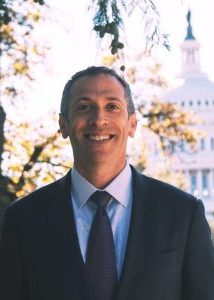 Matt Chiller, Vice President, Federal Government Relations
Matt Chiller, Vice President, Federal Government Relations
Organization: Jacobs (Program Management Consultant)
On Project Since: 2010
Chiller oversees the federal government relations and advocacy for the diversion, which “has required a wide array of federal authorizations and funding over time.” Those authorizations came after many meetings across three administrations with elected leaders at the state and federal level where project leaders worked to “highlight the project’s needs and illustrate why the diversion is so critical to the community,” he said.
While the need for the diversion was clear in the Fargo-Moorhead region, it was more of a challenge to show it should receive federal funding.
“We went from receiving zero federal funding, to eventually $5 million a year, to later $100 million a year before receiving the infrastructure bill’s influx of $437 million. This was a result of years of effort from the whole team.”
While receiving the needed funding was key to the project’s success, Chiller said the accomplishment that really stands out is the “creation and implementation of the first ever public-private partnership program within the Corps. We created the program in 2014 and the diversion was the first ever to take advantage and show what was possible. It did wonders to move the project forward and expedite funding from the federal government.”
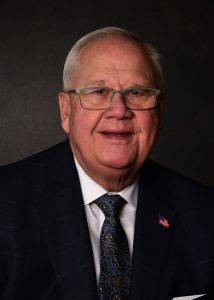 Bernie Dardis, West Fargo Mayor
Bernie Dardis, West Fargo Mayor
Organization: City of West Fargo
On Project Since: 2018
Although it doesn’t directly border the Red River, West Fargo experiences the impacts of flooding.
“It is vitally important that we tackle flood protection as a metro-wide project,” Mayor Dardis said. “While we may not each be impacted by rising water, flooding impacts the economic development, workforce, and quality of life for our entire region. We are all partners in protecting our communities and neighborhoods to ensure a thriving metro.”
For these reasons, Dardis has played a big role in the project. He has served on the MFDA Board, chaired its Finance Committee and took part in the Governors Task Force.
“I have had the opportunity to work closely with our partners as we established our innovative P3 collaboration,” he said. “We are proud of this groundbreaking financial and project management strategy that has allowed us to move the project along efficiently and effectively.”

Tom Fuchs, Senior Construction Manager
Organization: Metro Flood Diversion Authority
On Project Since: 2022
“The magnitude of the entire FM Area Diversion comprehensive project is staggering,” said Fuchs, who joined the MFDA as its first construction manager. In that role, he reviews designs to ensure they meet project requirements and maintains connections with the many partnering agencies.
That ongoing coordination has been key to ensuring the project continues to move forward. In his short time on the project, Fuchs has already helped with coordination on both the federal and P3 portions of the project to overcome challenges and expedite project completion.

Madeline Daudt, Lands Specialist
Organization: Metro Flood Diversion Authority
On Project Since: 2022
Daudt’s role in the project is all things property management, including farmland leases, structure removal, right-of-entry requests, property maintenance contracts, property handover facilitation and board member support.
“This is a challenging, ever-moving project that takes time to understand and many, many people are coming together to make this happen,” she said. “This project not only affects you and your family but also your neighbors. Remember that one landowner’s cooperation can be a steppingstone for protection of thousands of people. I am grateful that the Fargo-Moorhead area has the opportunity to see through a project this big and impactful to our city!”
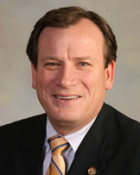
Tony Grindberg, MFDA Board Member
Organization: Cass County, North Dakota, Commissioner
On Project Since: 2013
Commissioner Grindberg was instrumental in securing funding for the project and continues to help move it forward. In 2013, as a state senator from south Fargo, he led the effort in the North Dakota legislature to pass the initial $450 million in state funding that was included in the Water Commission budget. Three years later, as a city commissioner with Fargo, he chaired the MFDA Finance Committee. During that time, he helped outline a clear plan and secure another $300 million in state and federal funding through the U.S. Army Corps of Engineers and North Dakota.
Now, as a Cass County commissioner, he’s continuing to contribute by serving on the MFDA Board and Finance Committee.
Over those 10 years, the project met a series of challenges, the biggest of which, he said, “was consensus with the State of Minnesota. The task force led by Governors Doug Burgum (North Dakota) and Mark Dayton (Minnesota) largely resolved the legal issues and allowed the project to move forward with momentum.”
“This project represents a sense of regional pride that together we moved a mountain,” he said. “Upon project completion, no more sandbags!”
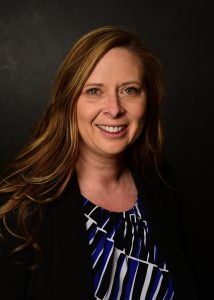
Peggy Harter, Deputy Program Manager
Organization: Jacobs (Program Management Consultant)
On Project Since: 2020
Harter helps to keep the numerous pieces of the diversion project connected and coordinated, ensuring the reviews and approvals are done in time to meet deadlines and budgets across various project teams. She regularly works to overcome challenges, and the one that stands out most for her is the coordination involved with a railroad near Horace, North Dakota. By considering alternative options, the MFDA saved millions of dollars by working with Red River Valley Railroad and BNSF to abandon the rail line that was only used a few times a year and instead move the elevator the rail line served to a better location. This prevented the expense of designing, building and maintaining a railroad bridge across the stormwater diversion channel in that area.
“When complete, this project could truly save the Fargo-Moorhead area from a catastrophic flood event. This not only saves the businesses and homes that are protected by the diversion, but it would also save the schools, hospitals and many businesses that serve not only those living within the protected area but also many of those living outside of the project limits that travel to and from the Fargo-Moorhead area to work, doctor and attend higher education facilities,” Harter said. “I lived in Fargo in 2009 during the flood of record and we were so close to losing our town. We are too important to our community and surrounding regions to lose our community to a flood.”

Chuck Hendrickson, City Council Member
Organization: City of Moorhead
On Project Since: 2015
Councilman Hendrickson serves on the MFDA Board as well as its Land Management and Finance committees. He’s also part of the Moorhead-Clay County Joint Powers Authority, which plays an important role in the project.
He has seen ups and downs to the project during his years of involvement, but he said the biggest accomplishment during that time was getting the agreement signed to end the dispute that had held up construction.
“This project will give the Fargo-Moorhead metro area residents peace of mind during major flood events, saving hundreds of millions of dollars,” Hendrickson said.
 John Hoeven, Senator of North Dakota
John Hoeven, Senator of North Dakota
Organization: U.S. Senate
On Project Since: 2008
“We’ve worked to build permanent flood protection for the Fargo-Moorhead region since my time as governor, when we secured $300,000 through the State Water Commission to develop a plan for providing comprehensive flood protection to the entire region, as well as a $75 million state commitment for the Fargo Southside Flood Project, which was to be incorporated into the larger plan,” the senator said. “Then, as U.S. Senator, we’ve worked through my role on the Senate Energy and Water Development Appropriations Committee to put in place the authorizations, funding and flexibility needed to remove roadblocks and keep this project moving forward.
“Our efforts have included passing 16 acts of Congress, including nine legislative provisions to provide project and new construction authorizations as well as seven separate appropriations to fund construction. We then coordinated efforts across four different agencies to secure federal financing, fully fund the federal share of the project at $750 million and advance the Red River Valley’s flood protection as a first-in-the-nation project, as it is the first major Army Corps project to utilize both a public-private partnership (P3) split-delivery model and a Water Infrastructure Finance and Innovation Act (WIFIA) loan.
“The P3 model allows different aspects of the project to be built concurrently, saving time and money, while the WIFIA loan will save local taxpayers more than $500 million over the life of the repayment period compared to other financing options. But this didn’t just happen – we had to work over the course of several years to put these pieces in place. That includes our efforts with the Corps and the Office of Management and Budget (OMB) to ensure projects that use alternative financing methods, like P3s, receive fair treatment during the federal cost-benefit analysis. We also worked to fund the Environmental Protection Agency’s (EPA) WIFIA program, secure a formal invitation for Fargo-Moorhead to apply and expedite the approval process. As a result, we have established a new paradigm for building Army Corps projects at a lower cost and more quickly, which will benefit not just the Red River Valley, but the whole nation.”
 Amy Klobuchar, Senator of Minnesota
Amy Klobuchar, Senator of Minnesota
Organization: U.S. Senate
Senator Klobuchar has been a key ally of the project, helping it to secure the funding necessary to continue to move forward in providing permanent, reliable flood protection for the community.
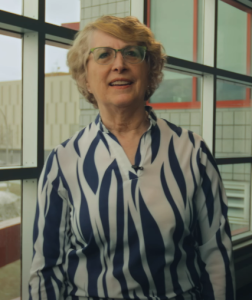
Katey Levihn, Diversion Channel Environmental Manager
Organization: Jacobs (Program Management Consultant)
On Project Since: 2021
Levihn has helped the project with a vast array of environmental permits and considerations. Among the biggest challenges she helped the project overcome was obtaining the 2023 Section 404 Permit, which includes requirements for fish passage, migratory boards, seed mixes and more. She also helped get 10 environmental-related plans approved for the P3 developer, which allowed them to move on to the design and construction phases.
The FM Area Diversion project, Levihn said, is “an asset to the community; first, because of the flood control, but also because of the amenities it will provide and the contribution to the local economy. With floods under control, the economy can boom as people realize Fargo-Moorhead is a safe, economically viable place to live and grow.”
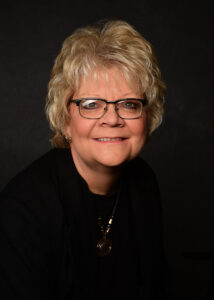 Dawn Lindblom, Executive Assistant to the Executive Director
Dawn Lindblom, Executive Assistant to the Executive Director
Organization: Metro Flood Diversion Authority
On Project Since: 2020
As the executive assistant to the MFDA executive director, Joel Paulsen, Lindblom manages his hectic calendar and travel schedule as well as his day-to-day operational obligations. She also serves as the secretary to the MFDA Board and its Finance, Planning and Land Management committees.
After coming on board, she implemented a consistent scheduling and distribution procedure for board-and committee-related meetings that has improved knowledge sharing and transparency.
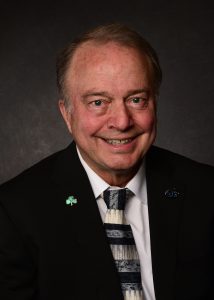 Dr. Tim Mahoney, Fargo Mayor
Dr. Tim Mahoney, Fargo Mayor
Organization: City of Fargo
On Project Since: 2008
Mayor Mahoney has been invested in this project since the beginning. He started on the MFDA Board with Dennis Walaker in 2009 and has remained on it in a variety of roles, including Board chairman. That has allowed him opportunities to refine the project from multiple angles, including trips to Washington, D.C., and Bismarck to request funding and working with Kevin Campbell on the project and the multiple modifications.
Acquiring that funding and getting the project off the ground may have taken a lot of work, but it was well worth it.
“We have had multiple victories along the way, and it has been fantastic to have project management,” he said.
Many people helped to make the project a reality, he noted: Rep. Jim Schmidt, Sen. Rich Wardner and Sen. Ron Sorvaag in the North Dakota Legislature; leaders in the U.S. Army Corps of Engineers and U.S. Office of Management and Budget; and Sen. John Hoeven.
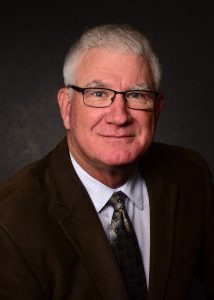 Martin Nicholson, MFDA Deputy Executive Director
Martin Nicholson, MFDA Deputy Executive Director
Organization: PGM Advisor
On Project Since: 2011
Nicholson began work on the project in 2011, when CH2M/Jacobs was hired as the Program Management Consultant. Martin served as the principal-in-charge and senior project advisor until 2019, when he retired from Jacobs and began his tenure as the MFDA’s deputy executive director. He has been involved in every aspect of the project since the MFDA was formed, including negotiation of the first PPA to consider P3 with the U.S. Army Corps of Engineers, assisting with the procurement of the P3 developer and engaging in multiple funding trips to both Bismarck and Washington, D.C. Currently, his primary focus is helping administer and manage the MFDA’s relationship with the Red River Valley Alliance on the roughly $1.4 billion P3 portion of the project, in addition to supporting Joel Paulsen in his role as executive director.
“While the project has been underway since 2009, there is a long way to go before we are ready to put it in service, which is scheduled for 2027,” Nicholson said. “The entire community will need patience for the temporary construction impacts as construction of the channel and associated bridges and structures ramps up this year.”
 Katrina Olson, Client Deliverables / Administrative Manager
Katrina Olson, Client Deliverables / Administrative Manager
Organization: Jacobs (Program Management Consultant)
On Project Since: 2019
Olson feels obtaining the Water Infrastructure Finance and Innovation Act loan, also known as a WIFIA loan, from the Environmental Protection Agency was one of the MFDA’s biggest accomplishments so far. The $569 million loan has a low 2% interest rate, which will save taxpayers millions of dollars over loans with more standard interest rates.
“This project will protect up to 260,000 lives — those lives may include your family, friend, work or school friend, someone who works in the neighborhood store, or someone who donates their spare time to a charity.”
 Joel Paulsen, Former Executive Director
Joel Paulsen, Former Executive Director
Organization: Metro Flood Diversion Authority
On Project: 2019-2024
When Paulsen became the MFDA’s first executive director in 2019, he could already list experience with the project. When serving as a Moorhead City Council member, he was appointed by Minnesota Gov. Mark Dayton in 2018 to the Governor’s Task Force. He was one of 16 in the group of technical experts and residents seeking to find solutions for permanent flood protection.
 Chad Peterson, Commissioner
Chad Peterson, Commissioner
Organization: Cass County
On Project: 2012-2024
Commissioner Peterson continues to serve on the MFDA Board, of which he’s been chairman. He has also served on project committees. Getting the project to the groundbreaking took teamwork, especially when “many said it was impossible or would take decades,” he said.
He especially wants to remind the public of “how grateful we should all be for those that gave their homes, land and businesses so that this project could be completed.”
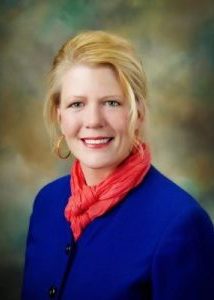 Mary Scherling, Cass County Commissioner
Mary Scherling, Cass County Commissioner
Organization: Cass County
On Project: 2013-2024
Commissioner Scherling has served as the Metro Flood Diversion Authority Board chairperson, Land Management Committee chairperson, and Planning Committee member. She encountered numerous project challenges during her service and made many trips on behalf of the project to Bismarck, North Dakota; St. Paul, Minnesota; and Washington, D.C. She also worked closely with the Minnesota DNR to secure permitting. This led to results.
“We were successful in resolving legal challenges and were able to move forward with the U.S. Army Corps of Engineers on key components of the project,” she said. “We secured additional state funding, signed a formal agreement with the Secretary of the Army for additional federal funding, and we secured a low-interest federal loan.”
Despite all of that, Scherling noted that “none of this would’ve been possible without the overwhelming backing of the taxpayers of Cass County, the sacrifice of affected landowners, our dedicated staff, and elected county leaders that came before me.”
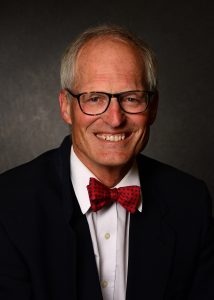 Larry Seljevold, City Council Member
Larry Seljevold, City Council Member
Organization: City of Moorhead
On Project: 2020-2024
As a City of Moorhead representative, Seljevold serves on the Moorhead-Clay County Joint Powers Authority committee, which manages issues on the Minnesota side of the border. He also serves on the MFDA Board.

John Shockley, General Counsel
Company: Ohnstad Twichell, PC
On Project Since: 2008
As the general counsel and bond counsel for the project, Shockley prepared the financial plan and secured the WIFIA loan and other project financing. This involved meeting with state and federal leaders to advocate for the project and its funding as well as playing a key part of the P3 project by leading the procurement and negotiating and drafting the settlement agreement.
“In short,” he said, “I have been involved in all aspects of the project.”
A lot of challenges came with that task during the life of the project, including negotiating the settlement agreement to resolve federal litigation.
“It was challenging to deal with all of the parties and to craft a settlement agreement that would allow the project to go forward,” he said. Soon after, the WIFIA loan and other funding was secured.
“This is a transformative/generational project. 100 years from now the community will still be benefitting from the project,” Shockley said. “The impact of having long-term flood protection for future generations cannot be understated and will ensure that community can survive and thrive long after I am gone.”
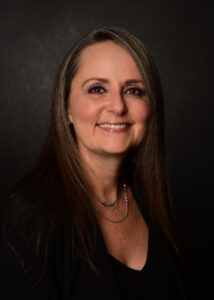 Jodi Smith, Director of Lands & Compliance
Jodi Smith, Director of Lands & Compliance
Organization: Metro Flood Diversion Authority
On Project: 2021-2025
As the director of lands and compliance, Smith oversees all property right acquisitions for more than 1,600 parcels and tens of thousands of acres. She also serves as the Adaptive Management Team chairwoman, leading various teams to mitigate environmental impacts, including impacts to aquatic habitat, riparian forest, and wetland resources. Additionally, Smith works to ensure necessary policies, procedures and guidance documents are created and followed throughout the project.
She said this “will not only protect the Fargo-Moorhead metro area, but it will also serve as a template for projects around the nation on how to lead a project more effectively and efficiently saving taxpayer money.”
 Ron Sorvaag, State Senator
Ron Sorvaag, State Senator
Organization: North Dakota Legislature
On Project Since: 2017
Sen. Sorvaag’s time with the project began when he served on the North Dakota Senate Appropriations Committee’s subcommittee for water budgets – a position he has held over several legislative sessions, in 2017, 2019 and 2021. In the years between, he sat on the Water Topics committee. He was instrumental in helping to secure the funding needed for the project.
“One of the largest challenges, from my perspective, in securing the funding for the diversion was getting the message out that this project was going to go forward,” he said. “The State needed to help fund their share so that it would be affordable protection.”
Now, with construction occurring at many locations, progress is visible.
“The top thing for the future is our community will have permanent flood protection,” he said. “We can prosper economically without the financial and personal interruptions that frequent major floods bring to the community.”
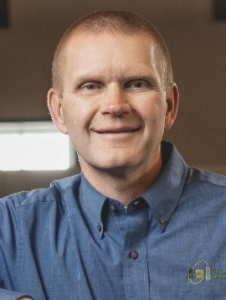 Gregg Thielman, HMG Senior Project Manager
Gregg Thielman, HMG Senior Project Manager
Organization: Houston Engineering/Houston-Moore Group
On Project Since: 2008
Thielman served as a senior project manager for Houston Engineering Inc. as well as Houston Moore Group since the beginning of project development as part of the U.S. Army Corps of Engineers’ Feasibility Study. The HMG team has been heavily involved in hydraulic and hydrology work and design in support of the Corps and local project sponsors, including the MFDA. Thielman also served on the Governors Task Force’s technical team and participated in permitting discussions with the Minnesota Department of Natural Resources.
He said finding a solution that satisfied permitting requirements and expectations of the North Dakota and Minnesota regulatory agencies as well as the U.S. Army Corps of Engineers was the project’s biggest accomplishment.
“Ultimately, this involved balancing benefits and impacts between the states,” he said. “Also, finding a solution that can mitigate impacts to downstream areas and consolidating the impacts in the upstream staging area. HEI and HMG have been heavily involved in the H&H modeling efforts that helped find solutions to address both of these issues.”
There were complexities in finding a flood solution for the Fargo-Moorhead metropolitan area, and Thielmann wants those in the area to know there was significant “perseverance … to implement the solution.”

Greg Thompson, HMG Project Manager
Organization: Houston-Moore Group
On Project Since: 2008
Among Thompson’s first tasks in 2008 was developing a comprehensive hydraulic model used for design and hydraulic impact analysis to support the U.S. Army Corps of Engineers feasibility study. That included hydrology and hydraulics collaboration with the U.S. Army Corps of Engineers and the local sponsors (cities, counties and water resource districts), developing the operations plan, and completing numerous value-engineering-type sensitivity analyses as the project changed over time. Now, as an HMG project manager, he’s a technical consultant, overseeing hydraulic modeling, design support, and review for the southern embankment, in-town levees, mitigation components, and the stormwater diversion channel.
“In 2009, we were very close to losing the flood fight in many locations, and if any of the levees would have failed, floodwaters would have inundated homes and businesses,” he said. “Many residents within the FM Metro area take flood protection for granted, and they simply assume the cities/counties will take care of them. I believe most of the population does not understand the efforts that go into this project, and the value it will bring to the community. When complete, the project will bring peace-of-mind to the community during future spring flooding.”
It won’t be surprising that that has come with numerous challenges.
“The initial project design did not include the upstream mitigation area, and therefore the stormwater diversion channel would increase flood stages downstream of the project,” he said. “The solution to this was to develop an operations plan that would read streamflow gages and store floodwaters upstream of the metro area at the proper time to minimize project impacts. This involved intimate knowledge of the dynamics of the six rivers that flow through the metro area.”
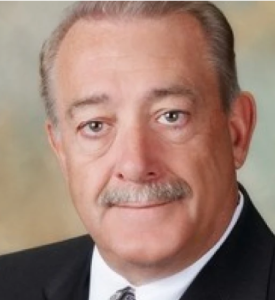 Darrell Vanyo, Former Cass County Commissioner
Darrell Vanyo, Former Cass County Commissioner
Organization: Cass County
Vanyo served as a West Fargo city commissioner for 13 years, and then as a Cass County Commissioner. He led the Metro Flood Diversion Authority Board in 2015. In November 2016, he was appointed interim county administrator, which allowed him to represent Cass County as one of two MFDA deputy executive directors. These roles were use until a full-time MFDA executive director was hired in 2019.
Javier Velasco, Developer’s Project Manager
Organization: Red River Valley Alliance
On Project: 2017-2025
Velasco took on managing the public-private partnership portion of the FM Area Diversion project in 2022, but his work preparing for this major infrastructure piece began years prior.
“During the bid phase, I was leading the operation and maintenance phase for the project,” he said. “This allowed me to have a wider view of the project and also a better understanding of the project documents.”
With construction now in high gear, Velasco focuses on keeping his team safe and productive, and “to keep pushing the project to a good end.”
That end won’t be as soon as many think, however. The community is focused on having permanent flood protection in 2027, but RRVA’s work doesn’t end there.
“RRVA is going to be part of the community,” he said. “We are not just designing and building the project. After this phase, we will run the operation and maintenance for the following 30 years.”
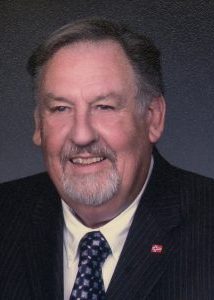 In Memory of Dennis “Denny” Walaker
In Memory of Dennis “Denny” Walaker
After having served as the Fargo Public Works operations manager since 1989, Walaker ran for and was elected as Fargo mayor in 2006. His experience with snow removal and flood fighting made him a trusted voice for the ongoing flooding issues. When record flooding came in 2009, he was the public face of the fight. When federal agencies pushed for him to issue a complete evacuation order for the city, he instead inspired the community to continue the fight — a fight the city won. He was Fargo mayor when the Joint Powers Agreement was executed to form the MFDA, and he supported hiring the expertise necessary to implement the comprehensive project. Walaker died in December 2014, during his third term as mayor.
 Tom Waters, Program Manager
Tom Waters, Program Manager
Organization: Jacobs
On Project: 2011-2019
Waters came on as the first program manager for the FM Area Diversion project in 2011, at which time the company was known as CH2M, before it was acquired by Jacobs. The team provided program management and technical and administrative experts that worked with the newly formed MFDA to assist them in setting up a governance, management and design/construction process for the program. They also facilitated the relationships between the MFDA and U.S. Army Corps of Engineers as they developed the concept and strategy for the public-private partnership – the first ever done in conjunction with the Corps. The team then leveraged that unique approach and strategy to help pursue federal funding.
“The project will protect the Fargo-Moorhead metropolitan area from catastrophic flooding, which will enhance the area as a principal regional economic center and contribute significant economic benefits to the nation,” Waters said. “The local-state-federal cooperation and coordination required to accomplish a project of this magnitude are unequaled.”
Carol Wickenheiser, GIS Project Manager
Organization: AE2S
On Project Since: 2016
There’s a lot of land involved in the FM Area Diversion project. Using GIS software, Wickenheiser updates maps used by the MFDA lands management team as well as independent land agents. Overcoming the hurdle of having online, real-time data took some effort, but Wickenheiser helped the project get there.
“Having that data at the team’s fingertips is crucial,” she said.
That data and being able to collaborate so closely with the lands management team led to the Red River Valley Alliance being able to break ground on the stormwater diversion channel in August 2022, marking a major project milestone.
“I’ve witnessed the recent record floods and worked within entities (City of Moorhead Engineering Division in 1997, and Clay County GIS Department in 2009 and 2011) helping fight those floods and offer services and information to those most impacted,” Wickenheiser said. “Without permanent flood protection, our ‘hub’ cities cannot provide necessary services to the greater area – services like hospitals, nursing homes, telecommunications and other utilities, schools, daycares, government agencies … the list goes on. The project will not only benefit homes and businesses within the protected areas, but it will ensure vital services can continue during extreme flood events and prevent evacuation of our most vulnerable populations. That is why I’m passionate about my work, and I strive to be efficient and helpful in any way possible to make this dream a reality.”
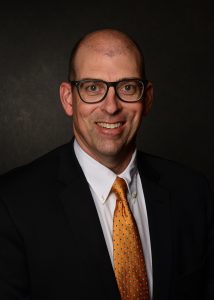
Robert Wilson, County Administrator
Organization: Cass County, North Dakota
On Project Since: 2017
Wilson serves as the co-executive director for the Metro Flood Diversion Authority.
Jun Yang, HMG Hydraulic Engineer
Organization: Houston-Moore Group
On Project Since: 2010
Designing a project of this scale took engineering expertise, and Yang was one who helped bring that to fruition. As the hydrologic and hydraulic (H&H) modeler for the project, he helped the MFDA and Corps of Engineers to keep the H&H models up to date. He also assisted in designing reaches of the southern embankment and reviewed the H&H models for the public-private partnership work.
This work presented challenges, the biggest of which was transitioning the project from its original plan to Plan B, which was the approved design that’s being built. With that in place, the project was set to move forward using the “unique P3 approach to make the project happen and financially feasible.”
That work will provide benefits for many years to come, Yang said.
 Greg Yavicoli, Former Construction Manager
Greg Yavicoli, Former Construction Manager
Organization: ASN Constructors
On Project: 2021-2024
Yavicoli joined ASN, the P3 developer’s design and construction arm, soon after it formed and helped the team break ground in 2022 and begin construction.
“I’ve been privileged to be able to contribute to the community on a professional and personal level,” he said. While it was a challenge “to get the project started on time and to get many cultures to come together and reach a common goal,” the team came together well and got to work.
“We are here for you!” Yavicoli said when asked what he wants the public to understand about their work on the project. “This is to provide protection for them, on time, and that’s our goal. We want to take every step to minimize the impacts this has on the farming and family communities.”
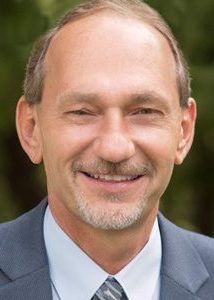
Bob Zimmerman, City Engineer
Organization: City of Moorhead, Minnesota
On Project Since: 2008
Zimmerman joined the project when the U.S. Army Corps of Engineers Feasibility Study began in 2008, and he has served as a technical adviser, providing reviews and input on a variety of the project’s technical issues. He has also led the development and construction of in-town flood improvements throughout Moorhead.
He’s been with the project through challenges and successes. The biggest challenge he helped to overcome was when, as a member of the Technical Advisory Group that supported the Governor’s Task Force, he helped negotiate the parameters for the “Plan B” design, which is the one being used. This led to the issuance of a critical permit from the Minnesota Department of Natural Resources.
“It would be difficult to identify a single accomplishment,” he said. “There were numerous technical, financial and legal accomplishments that resolved issues that would have halted or significantly delayed the project.”